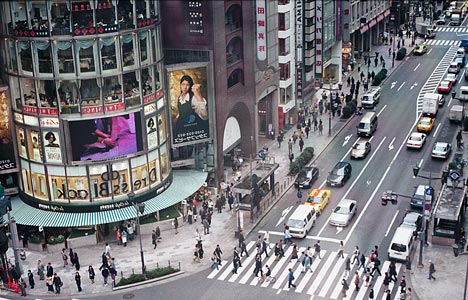Legendary Ginza district loses some of its lustre
All along what has for decades been Japan’s most fashionable and up-market shopping street, the luxury brands are moving out to be replaced by cheap chic. As the country struggles to raise itself out of the global economic downturn, companies such as LV and Gucci are downsizing or leaving Ginza, their former properties quickly snapped […]


All along what has for decades been Japan’s most fashionable and up-market shopping street, the luxury brands are moving out to be replaced by cheap chic.
As the country struggles to raise itself out of the global economic downturn, companies such as LV and Gucci are downsizing or leaving Ginza, their former properties quickly snapped up by the growing trend of “fast fashion” houses.
Now the throngs that still visit the district are shopping with a vengeance at places where their cash goes a little further; Uniqlo, Abercrombie & Fitch, H&M from Sweden and the Spanish chain Zara have all opened stores within the last year.

And as the operators of the Seibu department store announced that their flagship store would be closing its doors for the last time before the year is out, U.S. clothing retailer Forever 21 announced that it would be setting up store in the near future.
The district – appropriately – takes its name from the mint for silver coins that was established here in 1612 and in the intervening years Ginza had already established itself as the very best district in Tokyo for shopping, gossiping over lunch or just being seen.
The eight main “chome,” or blocks, of Ginza are bisected by Chuo-dori, which runs as straight as an arrow from the bridge at Shinbashi in the south to Kyobashi bridge.
The crossing half-way along the avenue is generally considered the heart of Ginza and has, on the four corners where Chuo-dori meets Harumi-dori, some of the most valuable real estate in the world.
One corner is taken up by the Mitsukoshi department store, the Nissan Gallery showcases new vehicles as well as a selection of classic cars, the glass cylinder and neon sign that make up the San-ai building certainly catch the eye, while Wako – with its pale stone edifice and distinctive clock tower – occupies the final corner.
Yet the times are changing for these venerable institutions.
Louis Vuitton has cancelled plans to move into a new building on the site of the former Gucci store; instead, Gap will take the vacant lot.
The good news for consumers, of course, is that prices are coming down and shops are rolling out the red carpet to attract new customers, with foreign tourists wanting to catch some of Ginza’s glamour still very much in evidence on the strip.
Source: AFPrelaxnews




